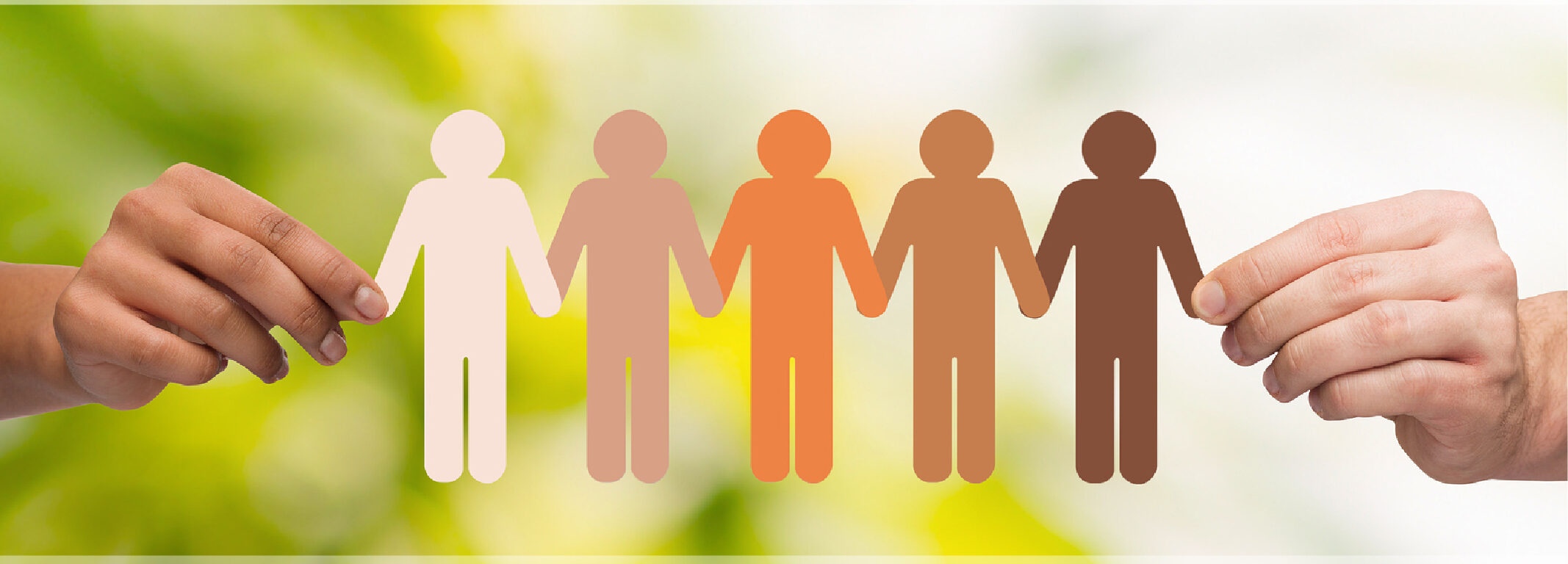
Although mindfulness begins as an individual practice, when mindfulness is shared among group members, a community is more likely to thrive. Individuals become aware when their personal agendas and motives might not be in alignment with collective goals. With awareness, individuals are able to challenge their own beliefs to root out attachments, defenses, and judgments. The beliefs and ideas held by individuals then reflect those in the collective consciousness, meaning the shared beliefs and social norms of the group. These shared beliefs become the guiding force in making community decisions.
When groups operate from the collective consciousness, they are better able to identify conflicts more quickly. They can then acknowledge differences more easily, and take actions that are best for themselves.
What is Mindful Community?
Mindful community building happens through the committed action of individual “builders” working as a group to create a viable organization. Here are ten ways to intentionally maintain a strong, mindful foundation of community and to create healthy community change:
- People support what they create.
- People act responsibly when they care.
- Conversation is the way to bring cohesion.
- To change a stymied conversation, change who is in it.
- Expect leaders to come from anywhere.
- Focus on what is working to generate energy and creativity.
- The source of wisdom is internal.
- Everything is a failure in the middle.
- Humans can handle anything when in a community.
- Generosity, forgiveness, and love are the glue of community.
Mindful Community Practices
Any of the mindful practices can be either formal or informal. A formal practice can anchor us into awareness, creating a framework for us to live in increased mindfulness. Informal practices, can occur simply by pausing – we stop whatever we are doing and turn our attention within. This may happen whenever we feel unsettled, or at any time we feel the impulse to do so. We may notice our breath, count our footfalls, take a short walk, or explore the roots of a thought to discover what might be triggering internal or external conflict.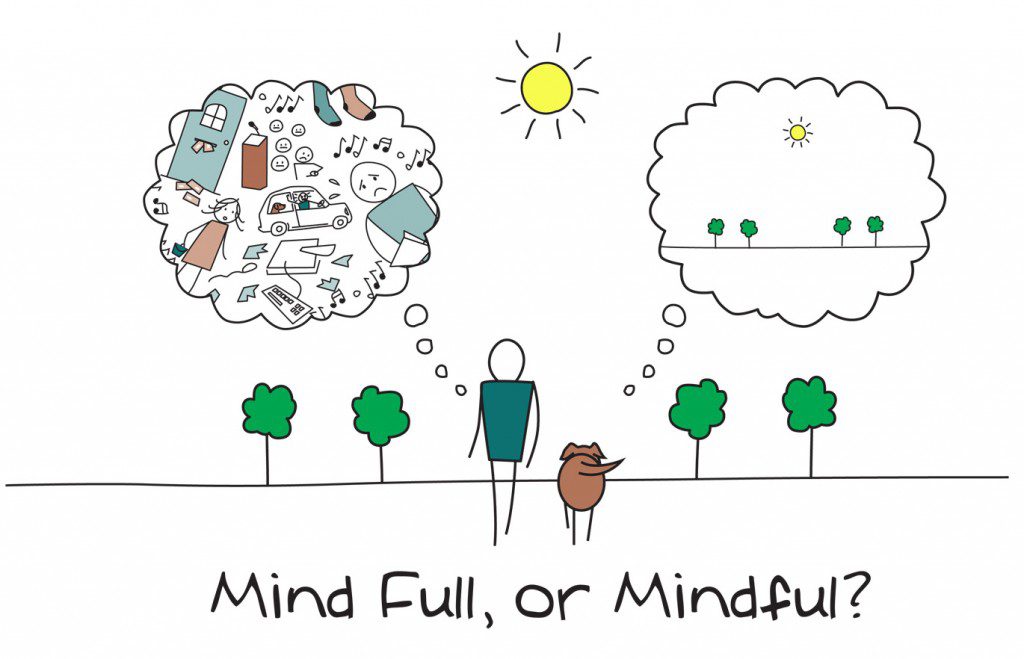
Some examples of mindful community practices include:
1. Sedentary practices, including sitting meditation, grounding, and centering.
2. Active practices, including tai chi, yoga, and walking. A contemplative walking practice might involve walking on a fixed path such as a labyrinth, or ordinary walking outdoors.
3. Practices connected with activities of daily life, such as mindful eating and exercise
4. Creative practices, including painting, drawing, journaling, writing poetry, and creating music
5. Combined practices, incorporating several of these elements
MINDFULNESS MULTIPLIER EFFECT™
 Mindfulness teaches you to stay aware of your present moment, but this practice effects more than just yourself. Presence is a gift that you can offer yourself. By first giving the gift of presence to yourself you can then watch it spread to others. From presence with yourself, you inherently bring presence to everything you do and everyone you meet.
Mindfulness teaches you to stay aware of your present moment, but this practice effects more than just yourself. Presence is a gift that you can offer yourself. By first giving the gift of presence to yourself you can then watch it spread to others. From presence with yourself, you inherently bring presence to everything you do and everyone you meet.
This is Ivy Child International’s Mindfulness Multiplier Effect ™.
This process ripples out into the world beyond each interaction and each moment. It can bring more consciousness and peace to community as a whole, increasing the probability of more humans participating in an intentional and peaceful existence.
SEVEN DAYS SEVEN WAYS OF Cultivating Mindfulness in Community
DAY 1: Beach Ball Breathing
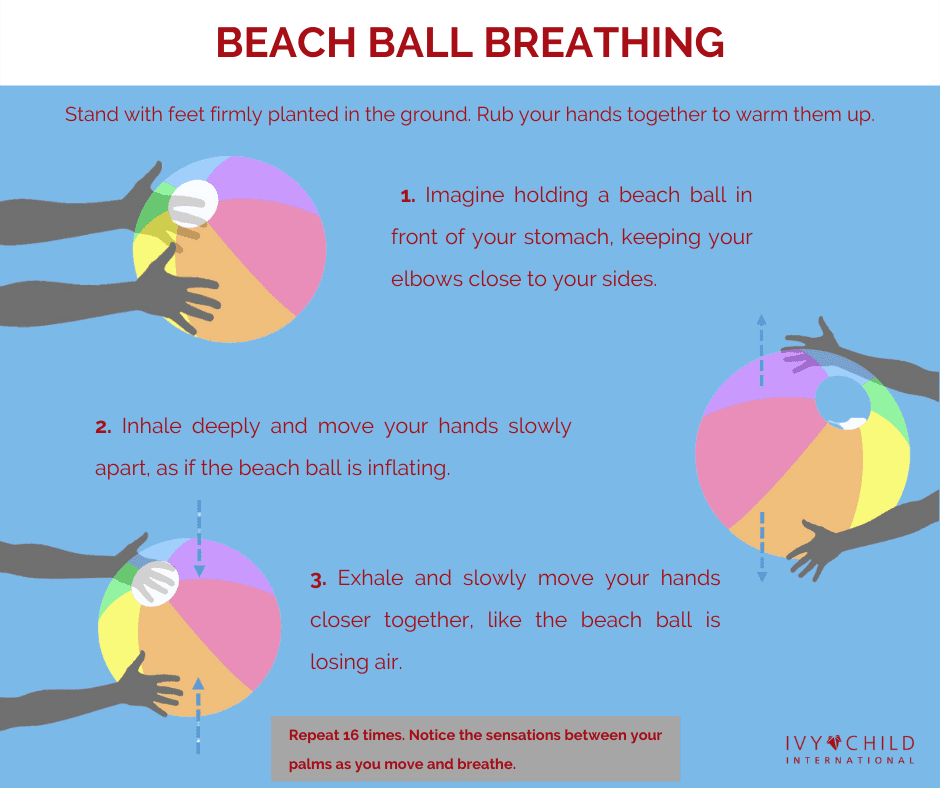 When we are stressed-out, sad, anxious, irritated, or angry, we typically want those feelings to just disappear. This is natural. It can be difficult to sit with uncomfortable emotions, especially when we feel like there’s no way out. We might try to drown them out with Netflix, work, exercise, or Oreos. Or maybe we try to blast out the blues with positive affirmations or pep talks in the mirror.
When we are stressed-out, sad, anxious, irritated, or angry, we typically want those feelings to just disappear. This is natural. It can be difficult to sit with uncomfortable emotions, especially when we feel like there’s no way out. We might try to drown them out with Netflix, work, exercise, or Oreos. Or maybe we try to blast out the blues with positive affirmations or pep talks in the mirror.
One way is to practice mindfulness: the practice of becoming self-aware in the present moment.
Mindfulness allows us to bring a healthy discernment into our everyday experience and identify the elements of our thought, speech, and behavior that lead to suffering and those that lead to freedom. Over time we can strengthen the causes for freedom and diminish the causes of suffering. Once we recognize the necessary conditions for happiness, mindfulness allows us to meet the experience with an embodied presence, thereby truly enjoying the unfolding of each moment
One of the best techniques to practice mindfulness is beach ball breathing technique.
- Stand with feet firmly planted on the ground. Rub your hands together to warm them up.
- Imagine holding a beach ball in front of your stomach, keeping your elbows close to your side.
- Inhale deeply & move your hands slowly apart, as if the beach ball is inflating.
- Exhale and slowly move your hands closer together, like the beach ball is losing air.
DAY 2: Letting Go Breath
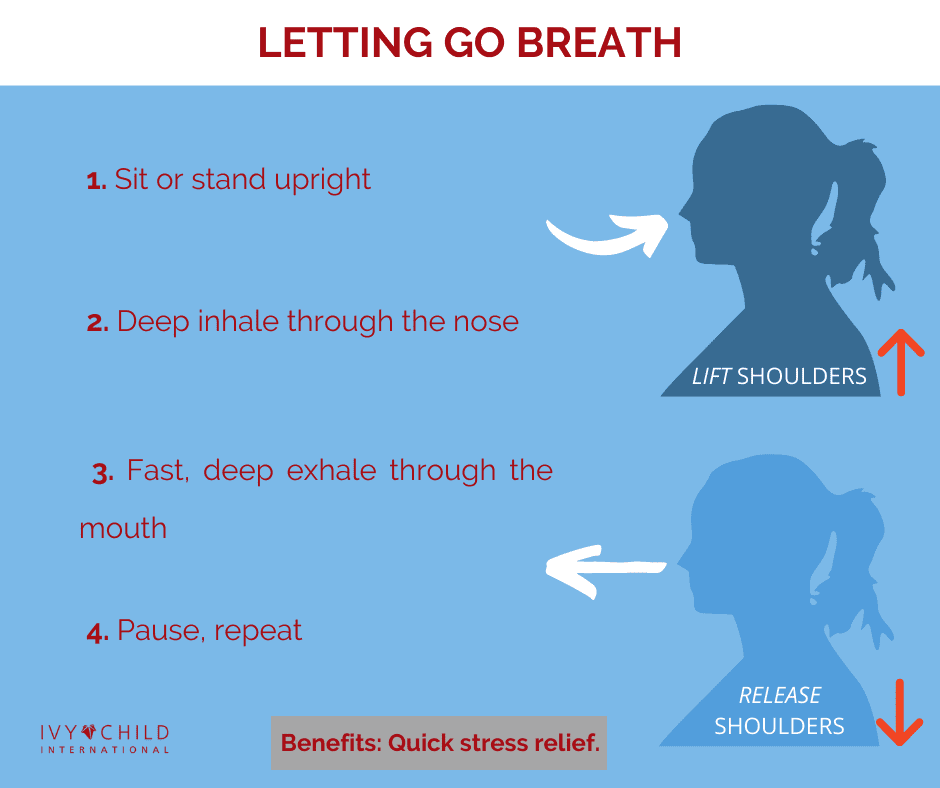 Connecting with the breath is a tool to help prevent the nervous system from jolting into sympathetic nervous system dominance. But you can still overcome this impulse with the “letting go breath”—a quick reboot you can practice anywhere.
Connecting with the breath is a tool to help prevent the nervous system from jolting into sympathetic nervous system dominance. But you can still overcome this impulse with the “letting go breath”—a quick reboot you can practice anywhere.
- Inhale through your nose.
- Exhale out on a sigh.
- Repeat as often as you like.
The “letting-go breath” can be performed quietly but it can also be used to create a big sigh of tension out of the body. Notice if you inhale your arms overhead, that as you swoop your arms down and sigh, your rib cage softens.
Breathing, just like singing and chanting, is a powerful type of pranayama. Pranayama is one of ancient part of yoga that we can practice all day off the mat. We can’t change many stressors in our lives, but we can learn to control our reactions to them. The more we shift our attention to mindful breathing, the easier it becomes.
Our breathing responds and adjusts according to the thoughts we are thinking, the feelings and body signals we are sensing, and to what we are witnessing and experiencing. Breathing is intimately connected to our physical and emotional state and vice versa. In other words, when we change how we breathe, we change how we feel.
DAY 3: Wave Pause Meditation
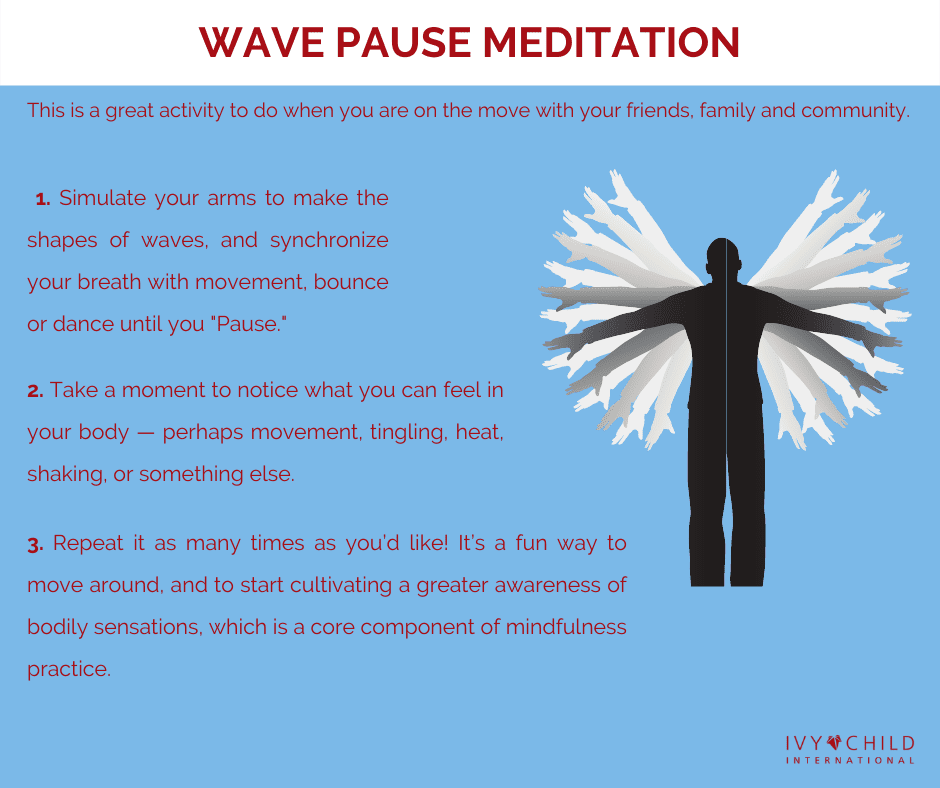 For many people, movement (bouncing, running, fidgeting, skipping) is a natural state of being. Many times, when we ask someone to “pay attention,” what we are really saying is “stop moving,” but physical movement has such a positive impact on the emotional well-being of a person.
For many people, movement (bouncing, running, fidgeting, skipping) is a natural state of being. Many times, when we ask someone to “pay attention,” what we are really saying is “stop moving,” but physical movement has such a positive impact on the emotional well-being of a person.
Mindful movement is a powerful tool to support mindfulness as movement, linked to decreased anxiety and improved mental health. Through movement, stress hormones are processed more quickly out of the blood stream, allowing children who are grieving and often experiencing feelings of increased stress to feel more grounded and supported.
Ivy Child’s wave pause meditation focuses on the same aspect. This is a great activity to do when you are on the move with your friends, family and community. This practice focuses on letting out your inner child and be free from all the restrictions and presumptions.
DAY 4: Body Scan Meditation
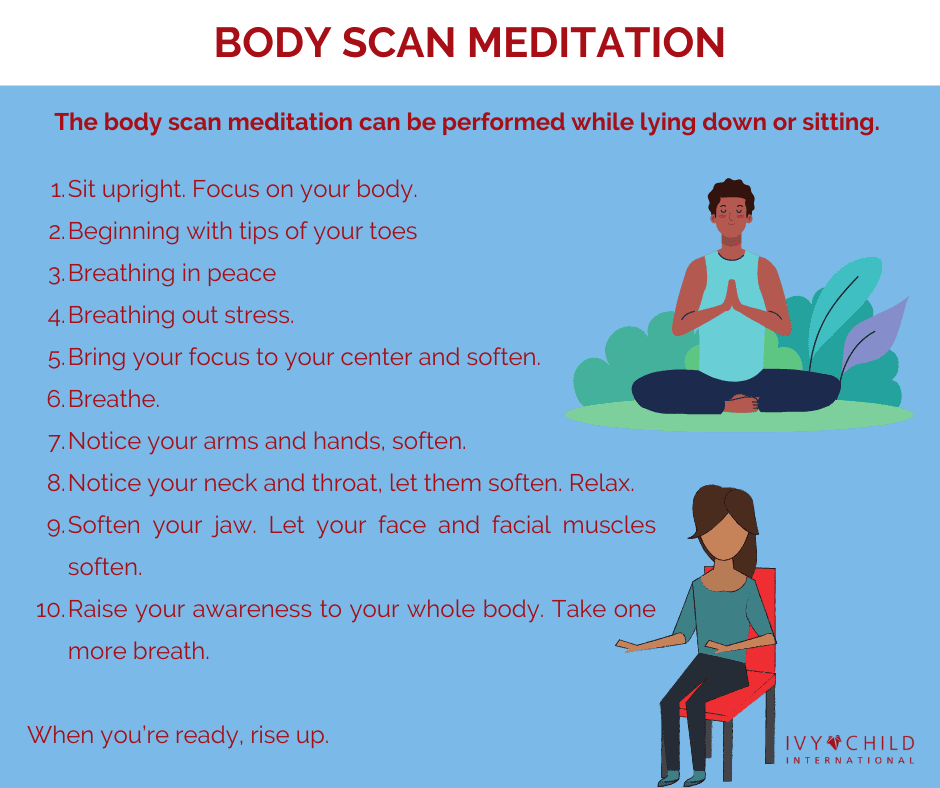 Body scan meditation is a meditative practice that involves mindfully scanning your body for sensations of pain, tension, or anything out of the ordinary. Developing greater awareness of bodily sensations can help you feel more connected to your physical self and gain greater insight into potential causes of unwanted feelings.
Body scan meditation is a meditative practice that involves mindfully scanning your body for sensations of pain, tension, or anything out of the ordinary. Developing greater awareness of bodily sensations can help you feel more connected to your physical self and gain greater insight into potential causes of unwanted feelings.
This knowledge can make it easier to address what’s wrong, leading to improved wellness in body and mind.
Why it’s worth trying
Experts have found evidence to suggest meditation can promote physical and emotional wellness in multiple ways, such as:
- improved sleep
- Anxiety and stress relief
- Greater self-awareness
- Increased self-compassion
- Reduced pain
- Reduced cravings
DAY 5: Mindful Listening
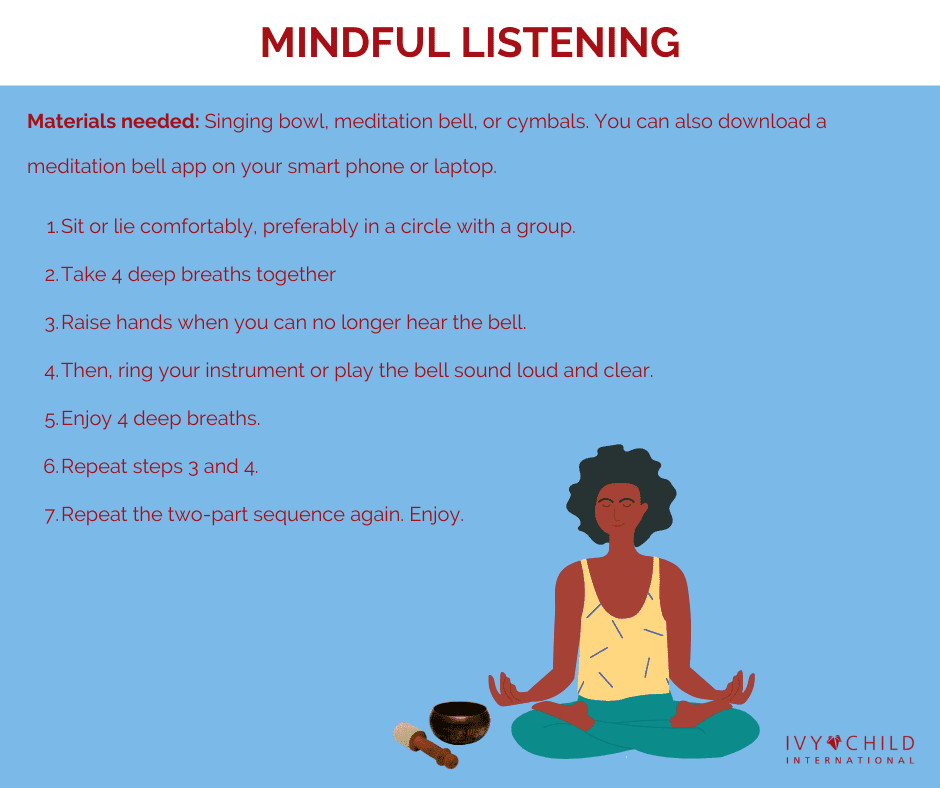 Mindful listening is a way of listening without judgment, criticism or interruption, while being aware of internal thoughts and reactions that may get in the way of people communicating with you effectively.
Mindful listening is a way of listening without judgment, criticism or interruption, while being aware of internal thoughts and reactions that may get in the way of people communicating with you effectively.
When you listen mindfully, you are fully present in the moment, which means you can absorb the speaker’s whole message, and he can feel heard and respected.
By being present, cultivating empathy, and listening to your own cues, you can learn to let go of reactions and other distractions that block your understanding, so that you remain open and receptive to other people’s ideas.
How to Practice Mindful Listening
- Being present. When you listen mindfully, your focus should be on the person you are listening to, without distractions. So, how do you do that?
A. Simplify your surroundings: Workplaces are full of distractions like phones, computers, printers, and electronic devices. Keep your workspace tidy and mute your devices.
B. Give yourself time: Take a minute or two to clear your mind before you meet with someone. Practice a few relaxation techniques , such as deep breathing and muscle relaxation, before the conversation.
C. Meditate: Meditation is a way of practicing mindfulness and can be an excellent way of learning how to focus on the moment. When you empty your mind of “clutter,” you can make room for other people’s points of view. - Cultivating empathy. We often see the world through the lens of our own experiences, personality and beliefs. When you’re empathic, you can understand a situation from someone else’s point of view.
- Listening to your own “cues.” Our cues are the thoughts, feelings and physical reactions that we have when we feel anxious or angry, and they can block out ideas and perspectives that we’re uncomfortable with. Mindful listening can help us to be more aware of our cues, and allow us to choose not to let them block communication.
DAY 6: Single-tasking Mindfulness
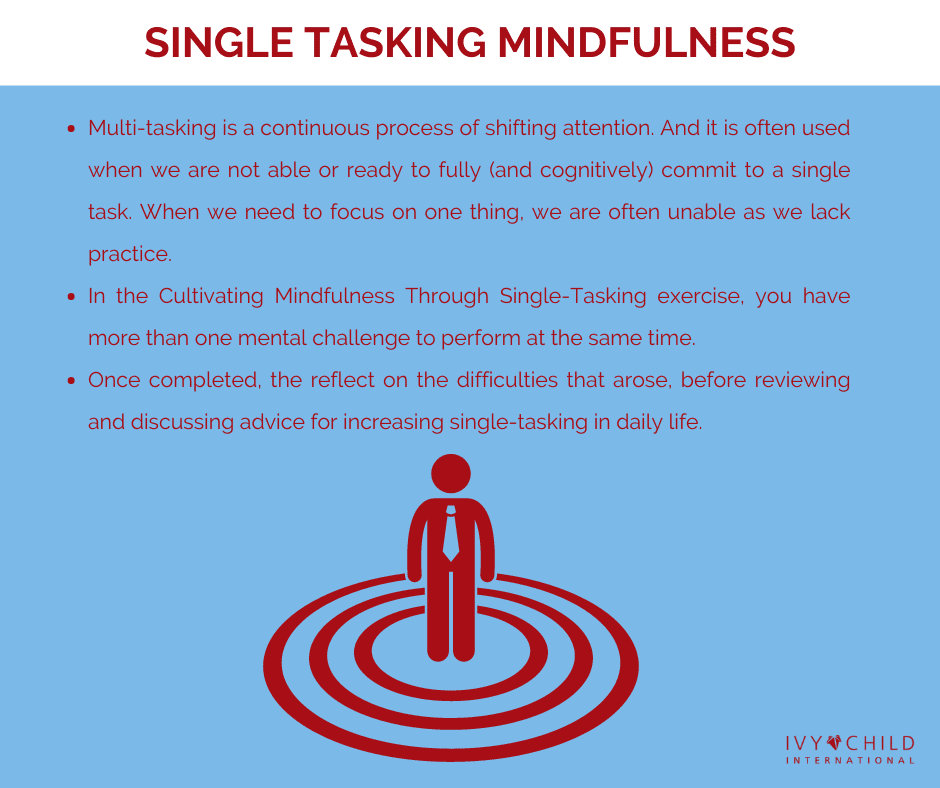 We live in a culture that loves efficiency. We’re always looking for a new and improved way to get more done in a shorter amount of time. And for a long time, our answer to this has been doing multiple things at once.
We live in a culture that loves efficiency. We’re always looking for a new and improved way to get more done in a shorter amount of time. And for a long time, our answer to this has been doing multiple things at once.
Multitasking, which really means switching from one narrow focus to another – the mind cannot hold more than one at a time in what’s called “working memory.” So interrupting one task with another can mean taking many minutes to get your original focus back to speed.
The opposite of multitasking is single-tasking, the ability to bring our focus to bear fully on just what we are doing. It comes to us naturally in those do-or-die times when a deadline forces us to focus fully. But how can we have that full concentration during the rest of our work life – or our life in general?
Mindfulness is the answer. Mindfulness gives us the capacity to notice bring an even, full attention to whatever is at hand. It gives us the power to move our concentration from place to place as we move through our day.
Focusing on only one thing can be a definite challenge. With our 5 senses constantly being bombarded, it’s tough to buckle down and develop a single pointed focus. Meditation is a practice. Keep practicing and your concentration on one thing will improve. Make a conscious effort to focus on one thing at a time
DAY 7: Walking Meditation
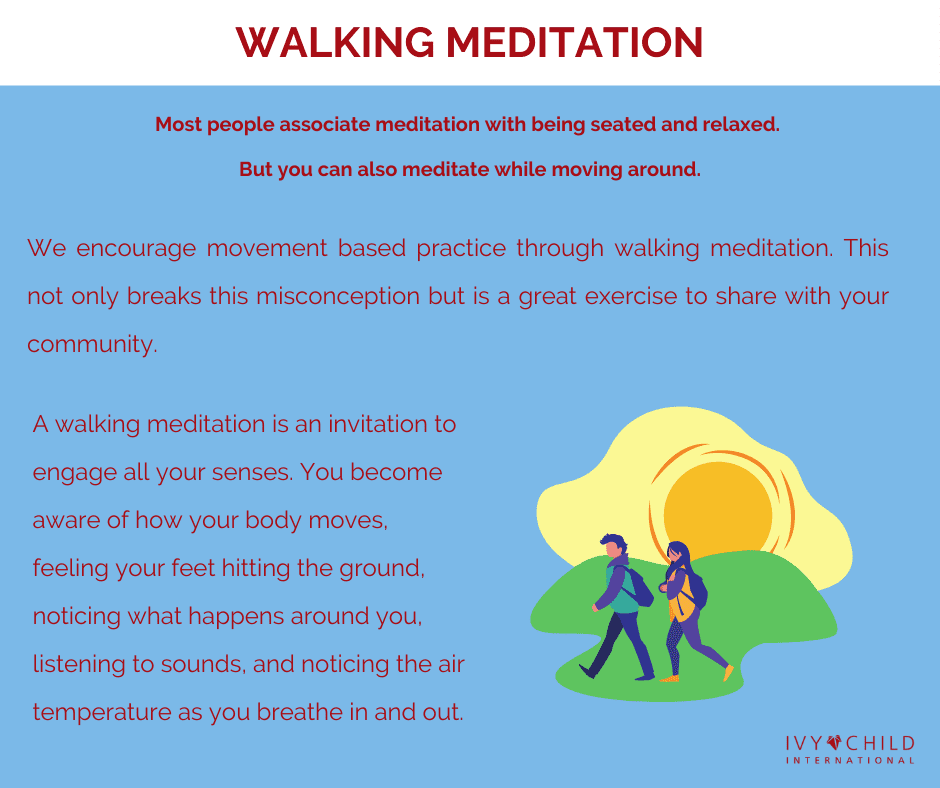 Walking meditation is more than a simple stroll in the park. It is usually done much slower than normal walks, and involves either coordination with the breathing, or specific focusing practices. It looks more like meditation than like walking.
Walking meditation is more than a simple stroll in the park. It is usually done much slower than normal walks, and involves either coordination with the breathing, or specific focusing practices. It looks more like meditation than like walking.
Unlike seated meditation, when walking your eyes are open, body is standing and moving, and there is a bit more interaction with the outside world. Because the body is moving, it is easier to be mindful of the body sensations and anchored in the present moment; for this reason, many people find walking meditation easier than seated meditation.
Points to remember
Here are some things to keep in mind, regardless of the “type” of walking meditation you choose.
- Place. It may feel a bit awkward in the beginning, so you might consider doing walking meditation first in your backyard. If you are walking outside, find a secluded place where you won’t be distracted or disturbed. Ideally, the walking path should be slightly enclosed, so there is less distraction from the scenery, and the mind can more easily go inwards. Stay away from high-traffic and heavily populated walking areas. It’s also important that you feel safe in your surroundings.
- Length. Ideally practice for at least 15 minutes. Since there is no discomfort of seated practice or of not moving, you can naturally do it for longer periods than seated meditation.
- Pace. Slow is better. Pace should be steady and even. If your mind is agitated, or your ability to focus is weak, walk very slowly, until you can stay in the present moment with each step.
- Anchoring. Before you start your walking session, spend a minute or two just standing there, breathing deeply and anchoring your attention in your body.
- Stand with your feet hip-width apart and balance your weight evenly on both feet. Take the time to feel the stability of the ground.
- Take a few deep breaths.
- Close your eyes and do a scan of your whole body, starting at your feet. Make note of any sensations, thoughts or feelings and take the time to explore the sensations fully.
- Bring your awareness to your body, noticing how your body feels as you are standing, and becoming aware of all the sensations going on.
- Re-focusing. Just as in seated meditation, whenever your mind starts to engage with thoughts (or any type of mental content), bring your attention back to your walking and your breathing.
- Attitude. We are not going anywhere. There is nothing to achieve, except mastering our attention and presence. Simply be with the process.

